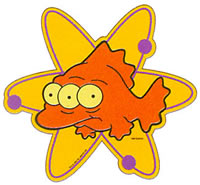What is termed a guidance that EPA is considering - as opposed to a regulation - does not require public airing before it's decided upon.
EPA officials contacted today in the Atlanta and D.C. offices had no response on the issue as of 6 p.m.
The radiation guides called Protective Action Guides or PAGs are protocols for res ponding to radiological events.
ponding to radiological events.
Drinking water, for example, would have a huge increase in allowable public exposure to radioactivity, the group says, that would include:
- A nearly 1000-fold increase in strontium-90
- A 3000 to 100,000-fold hike for iodine-131
- An almost 25,000 rise for nickel-63
The new radiation guidance would also allow long-term cleanup standards thousands of times more lax than anything EPA has ever before accepted, permitting doses to the public that EPA itself estimates would cause a cancer in as much as every fourth person exposed, the group says.
These relaxed standards are opposed by public health professionals inside EPA, according to documents PEER said it obtained under the Freedom of Information Act.